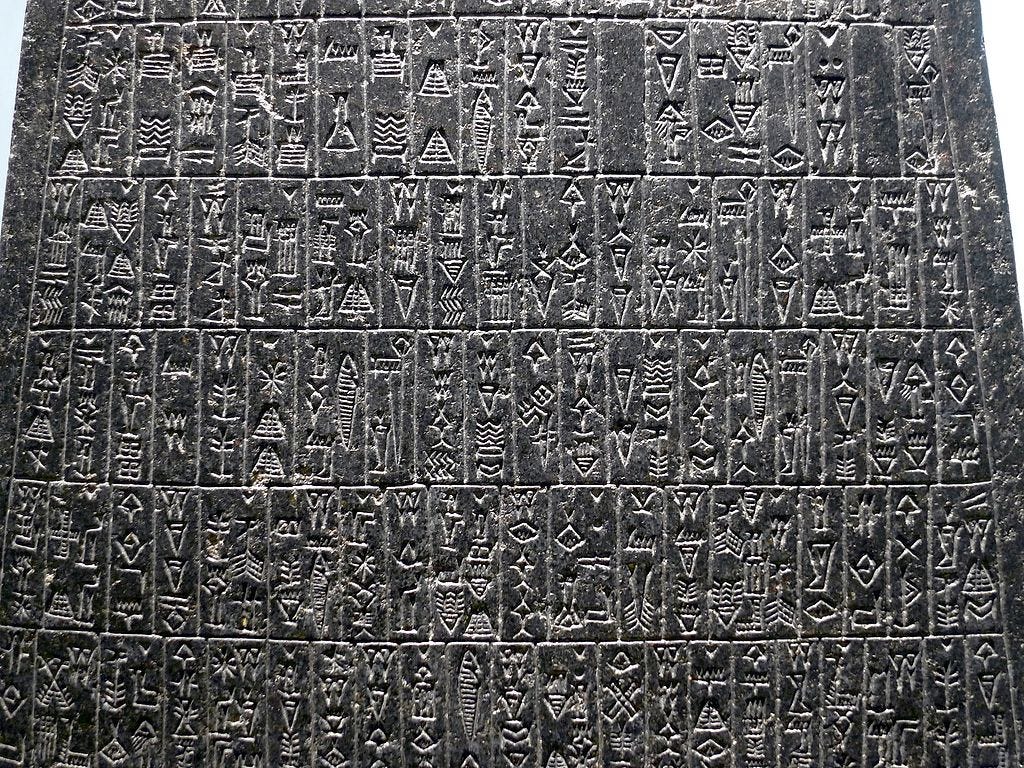Welcome to Thursday Things! If you enjoy this edition, please click the heart icon in the header or at the end of the post to let me know.
Bad to the bone. Photo by Jon Butterworth on Unsplash
Dinosaurs are delicious!
We might lazily think of mammals only showing up after the asteroid took out the dinosaurs. But our warm-blooded mammalian cousins were there even as the dinosaurs ruled the earth, skulking in the shadows, biding their time...
And, occasionally, not merely biding but biting.
At least one Cretaceous era mammal had a taste for dinosaur, judging from a recent fossil find in China.
Caught in the act: Mammal found with teeth sunk in a much larger dinosaur
A new fossil described this week captures two intertwined animals caught in a life-or-death struggle right before both were entombed in a volcanic event. Published in Scientific Reports this Tuesday, the fossil doesn’t capture one dinosaur attacking another—rather, the predator in this case is a smaller mammal known as Repenomamus robustus, and it died with its teeth clamped upon the herbivorous Psittacosaurus lujiatunensis, a dinosaur three times its size.
Gut contents from a Repenomamus fossil described in 2005 prove this same mammalian species ate very young and considerably smaller Psittacosaurus. But the remarkable fossil revealed today is the first evidence of any Cretaceous mammal attacking a larger dinosaur. It’s an astounding snapshot of ancient behavior, challenging previous assumptions of predator/prey dynamics millions of years ago.
In this corner, for Team Dinosaur, we have Psittacosaurus, “a type of bipedal ceratopsian dinosaur—an early relative of dinosaurs such as Triceratops—with a large beak-like snout and spiky tail bristles.”
And taking a bite out of dinosaur dominance for the upstart Mammal Nation is Repenomamus robustus “an early mammal approximately the size and weight of a Virginia opossum.”
The dinosaur never saw it coming.
This aggressive predation from a mammal “comes as a bit of a shock” to Mallon. “Dinosaurs and mammals did not overlap in body size during the Mesozoic Era, so traditional knowledge holds that dinosaur-mammal interactions were unilateral, which is to say that the dinosaurs ate the mammals,” he said. “We never would have guessed that small mammals were capable of eating larger dinosaurs were it not for this unique fossil.”
Mammals gonna mammal.
Unfortunately for both prehistoric creatures the real winner of this battle for the ages was the massive flow of volcanic debris that overtook them in the midst of their struggle. Bad luck for them, but an amazing stroke of fortune for paleontologists, who gained a snapshot of the only known instance of mammal-on-dinosaur violence in the fossil record. #TeamMammal
Mammal vs. Dino. Nobody gets out of here alive. Image: Gang Han via Ars Technica
AI meets Akkadia
Just as mammals replaced dinosaurs as the dominant lifeforms on planet Earth, someday artificial intelligence may replace us all.1 Until that day, however, AI is your friend! AI is here to help!
This item is a surprising juxtaposition of one of humanity’s oldest inventions — cuneiform writing — with one of the newest, AI language translation models.
New AI translates 5,000-year-old cuneiform tablets instantly
Translating ancient languages is a slow and laborious task.
Take ancient Akkadian. This early Semitic language is one of the best attested from the ancient world. Hundreds of thousands, by some accounts more than a million, Akkadian texts have been discovered and today lie in museums and universities. Many have even been digitized online. Each one has the potential to teach us about the life, politics, and beliefs of the first civilizations, yet this knowledge remains locked behind the time and manpower necessary to translate them.
Fortunately, dedicated scholars have undergone years of training and devoted their entire careers to learning Akkadian. They work diligently to translate those ancient clay tablets archaeologist keep digging up. Sure, they’ve got a backlog of decades, with hundreds of thousands of tablet remaining to be translated and only a small number of scholars able to do the work — but that only spells lifetime job security for anyone in the business of translating Akkadian cuneiform!
Or at least it used to…
To help change that, a multidisciplinary team of archaeologists and computer scientists has developed an artificial intelligence that can translate Akkadian almost instantly and unlock the historic record preserved in these 5,000-year-old tablets.
Thanks, AI!
Actually, there is still plenty for the human experts to do:
As promising as the initial results are, there is still work to be done … some of the test sentences were mistranslated. And like other AI models, this one is prone to hallucinations — moments where the response has no connection to the source. In one instance, the human translator produced the sentence “Why should we (also) conduct the lawsuit before a man from Libbi-Ali?” The AI’s translation: “They are in the Inner City in the Inner City.” (A bit off.)
The details are fascinating, so the full article is worth a read if you’re into “ancient history meets modern technology” mashups. The upshot is the AI can do a rough cut translation of the many, many tablets yet to be deciphered, freeing human experts to apply their expertise to refining the translations and interpreting the texts.
Read all the science details here: Translating Akkadian to English with neural machine translation
And you have some Akkadian tablets you need translated, the code is at Github here: https://github.com/gaigutherz/Akkademia
Akkadian handwriting is so tidy. Manishtusu obelisk. Image: Mbzt
Thank you for reading!
Please click the hearts, leave a comment, and use the share feature to send this issue to a friend who might enjoy it. See you next Thursday!
Or maybe we’ll go down fighting AI minions on the edge of an exploding volcano, dinosaur style. That would be cool.





